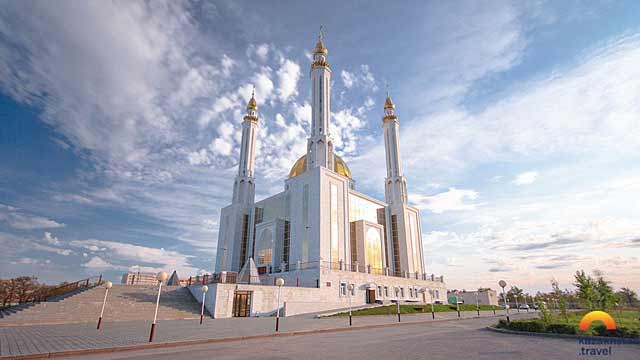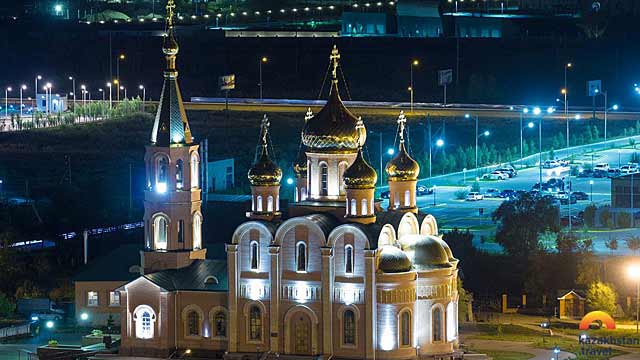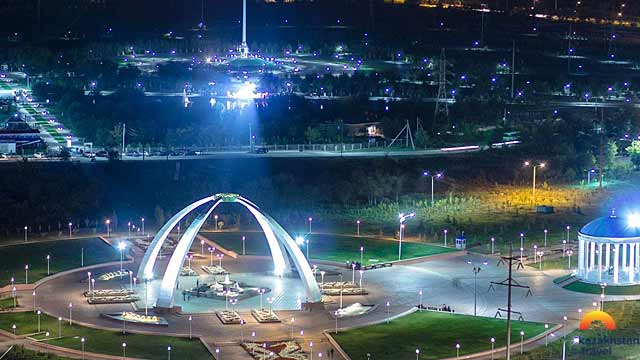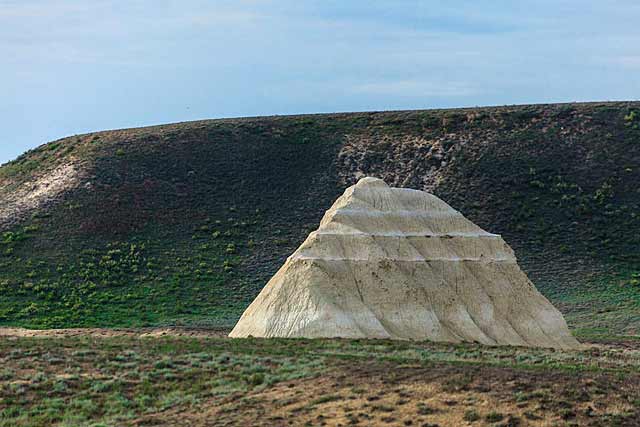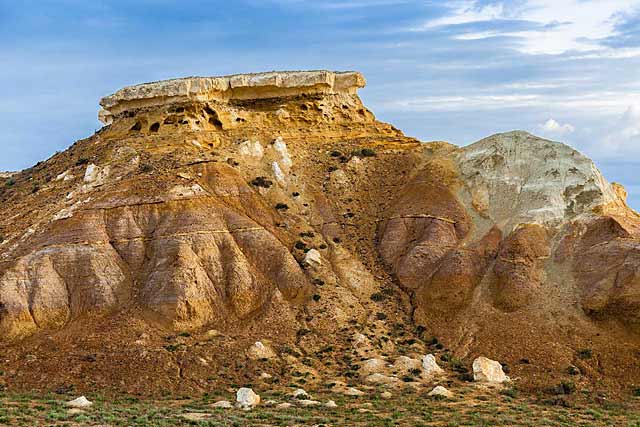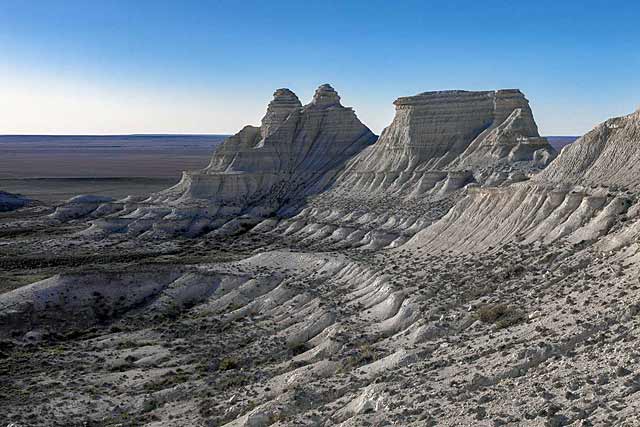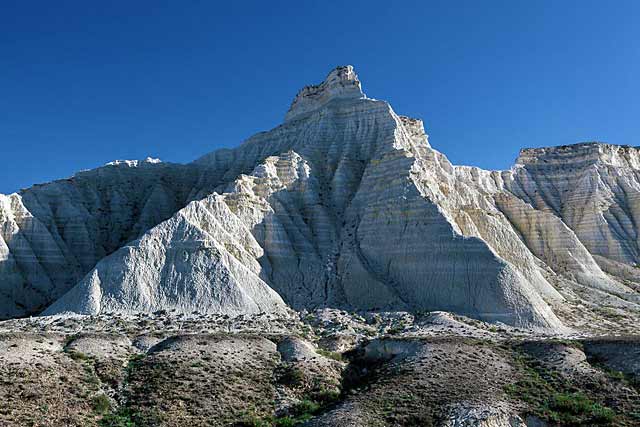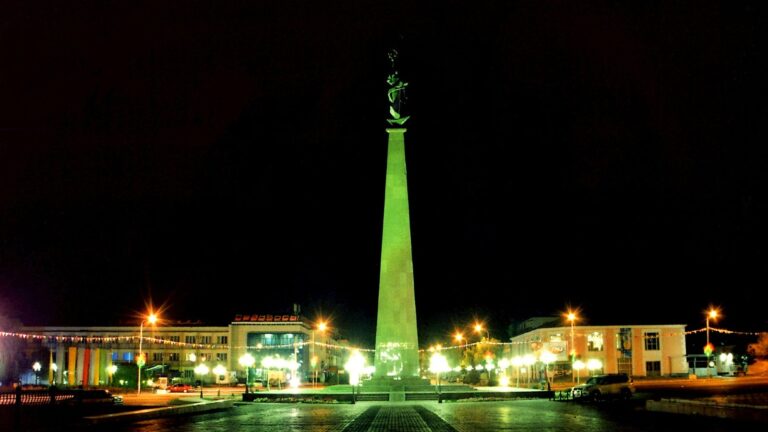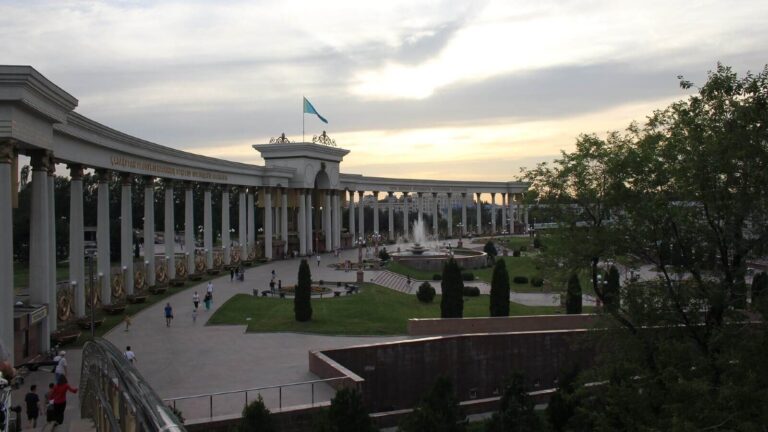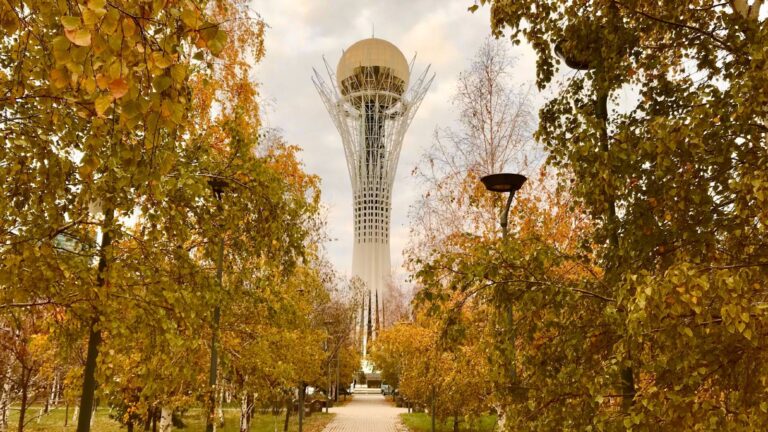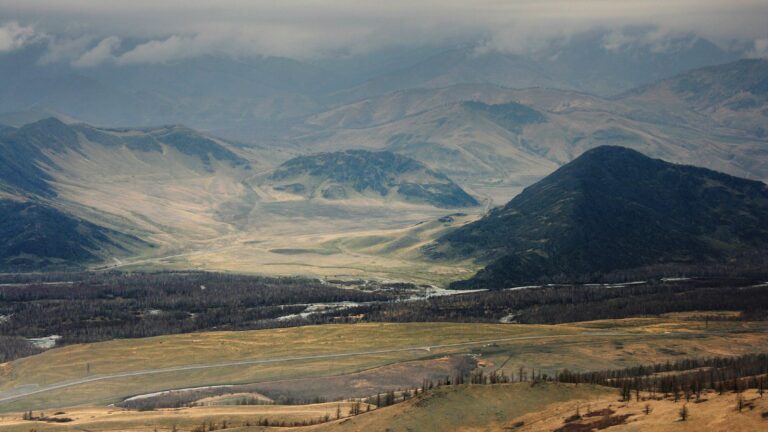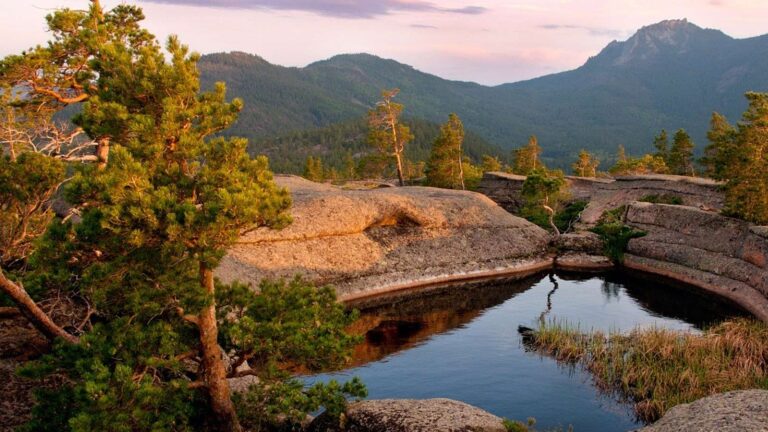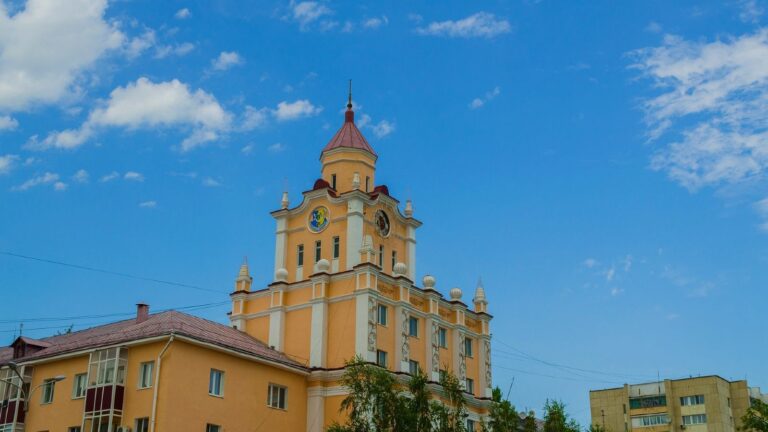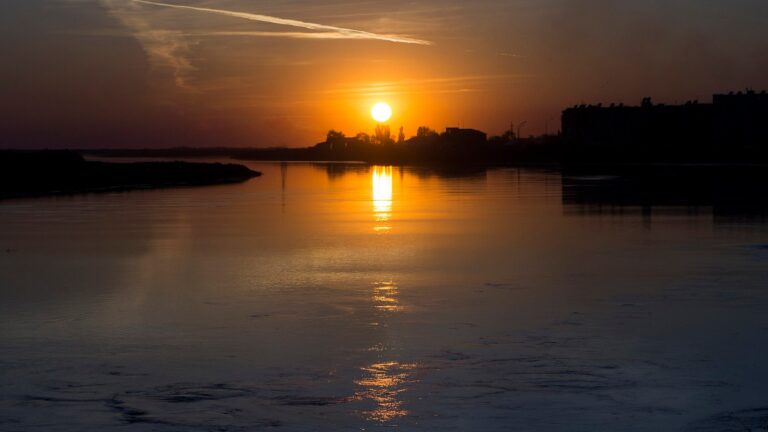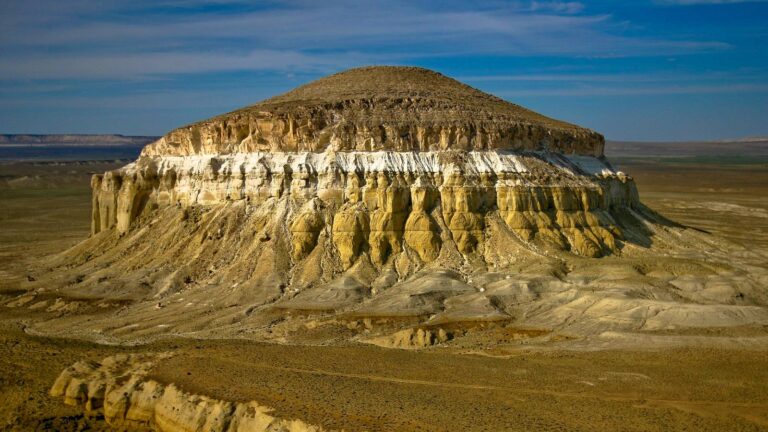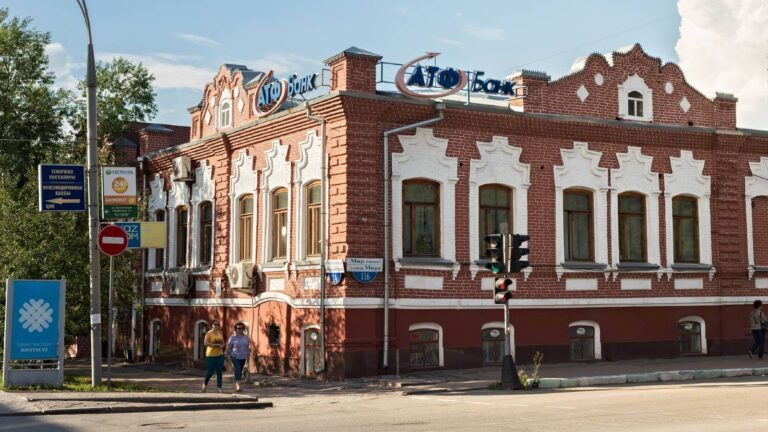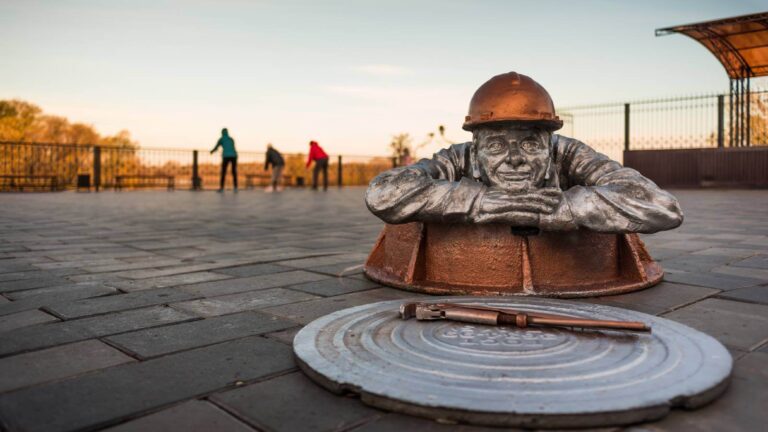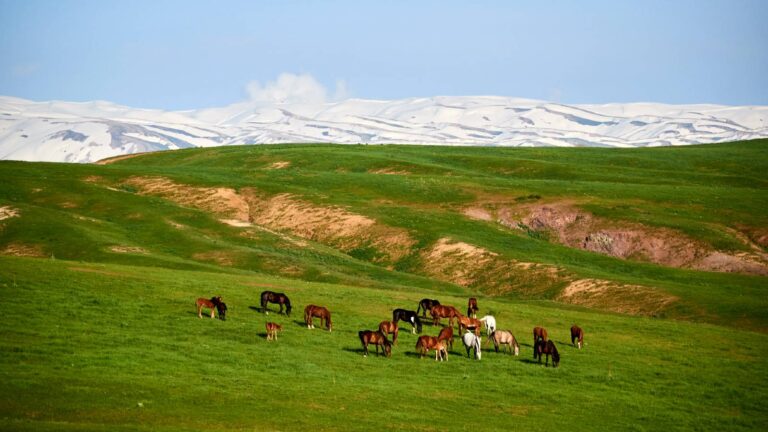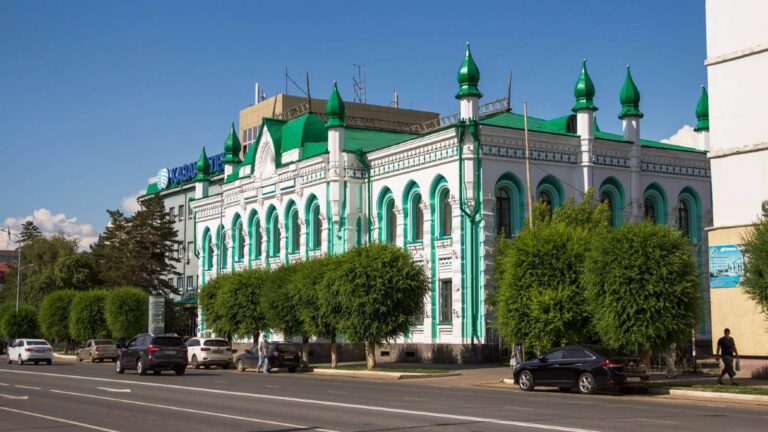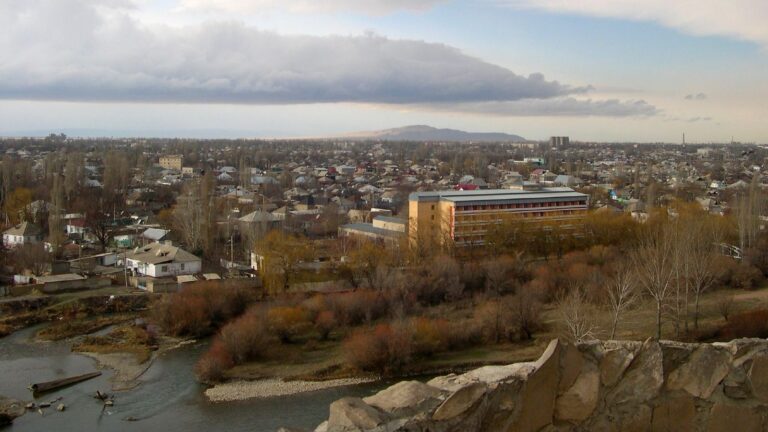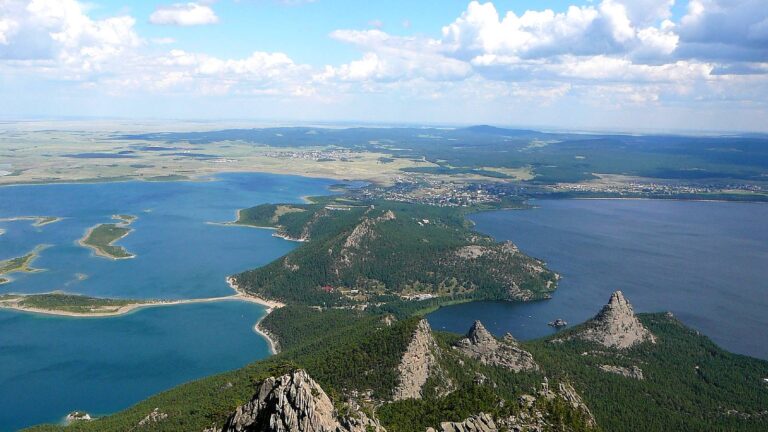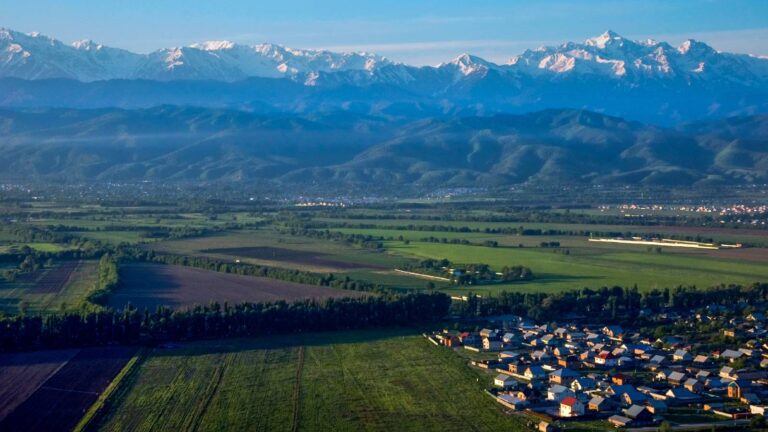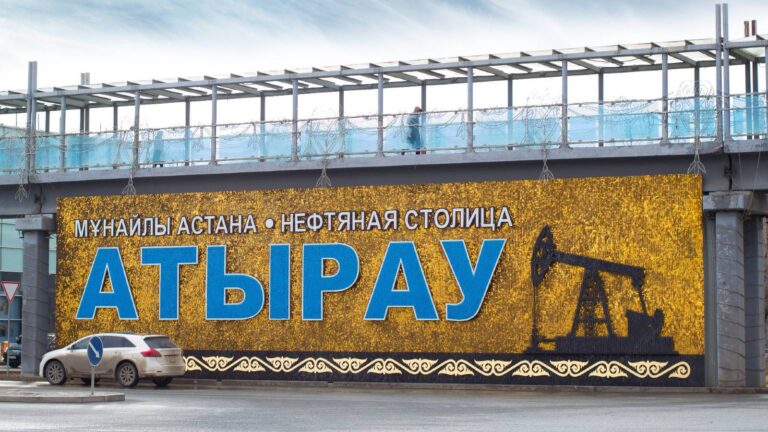The transport potential of the region is very high. Railway, automobile and air transport modes function in the region. The administrative center of the region houses one of the largest airports in Kazakhstan, the Aktobe international airport named after Aliya Moldagulova, which was set in operation on November 1, 1975. The area of the airport is 9 774 square meters, the capacity is 500 passengers per hour.
There are 32 railway stations in Aktobe region, with the main station in Aktobe, and 17 passenger trains running at Aktobe station, of which 9 trains running regularly within the country and 8 to CIS countries (Russia, Belarus, Uzbekistan, Kyrgyzstan).
Highway of international importance “Western Europe – Western China” runs on the territory of the region.
Also in the administrative center of the region there is a bus stations, a terminal, as well as passenger points of services.
There are many sacred and natural tourist sites in the region. The most popular are Memorial complexes of Kobylandy batyr, Abat-Baytak, Khan molasy, and Eseta Kokuly, Kokzhar fair Trade rows on the Great Silk Road for the religious tourism and Cretaceous mountains, Aktolagai south plateau , Mount Akbota – Sankibay, reservoir Kargalinskoye , Volchiy waterfall, Barkyn sands, Irgiz-Turgay and Orkash nature reserves, aul Nemoy, Zhamanshin meteorite crater, Aydarlyasha geomorphological section for ecotourism.
City of Aktobe
International class hotels as like Amsterdam, Ibis, Dastan open their doors to the guests of the city. There are 3 large shopping and entertainment centers in the city, Keruen city, CITY Shopping Center, Aqtobe Mall, Water Park “Tree of life Aktobe”, amusement park “Yurta Park”.
For lovers of out-of-town recreation: Recreation centers “Green Land”, “Halva Resort”, “Solnechny”, agro tourism complex “Kuk Zhailau”. And the most active tourists can visit the recreation center “Barkyn” located in the sands of the Barkyn Uilsky region, as well as Tambay agro tourism complex of the Kobdinsky region.
In the II millennium BC the Andronov (Alakul) tribes lived on the territory of Northern and Western Kazakhstan. In the steppes of the Aktobe region, two types of grave structures were discovered – ring-shaped stone fences and barrows.
In the 8th-10th centuries, representatives of the Turkic tribal unions of the Kipchaks, Kimaks and Oguzes lived on the territory of the region. Several Oguz fortresses were found here: Nujakh and Badagakh in the region of the Mugodzhar ridge, Daranda (Dendera) and Darku between the northeastern slopes of the Mugodzhar and the spurs of the Southern Urals.
In the XI-XII centuries, the territories of the Aktobe region were part of the vast possessions of the Kipchak tribes. During the Mongols conquest of Central Asia, this region became part of the Mongol Empire, and after its collapse it became part of the Golden Horde.
In the end, the territory of the modern Aktobe region became part of the Kazakh Khanate. The territories of Western Kazakhstan belonged to the tribal associations Alshyn (alimuly and bayuly) and Zhetyr, which together formed the Small Horde (zhuz).
During the reign of Anna Ioannovna, the Younger and the Middle Zhuzes were accepted into Russian citizenship. In the late 1950s, these steppes were incorporated into the empire on a general basis. The Orenburg Kyrgyz steppe was renamed into the Region of the Orenburg Kyrgyz.
In 1865, the Orenburg Kyrghyz Region was divided into two: the Ural Region (from the lands of the Ural Cossack Host, the western and small space of the middle part of the Orenburg Kyrghyz Region) and the Turgai Region (from the rest of the Orenburg Kyrghyz Region).
In May 1869, a detachment of two infantry companies, hundreds of Cossacks and 14 guns, commanded by the aide-de-camp, Count von Borg, went to the interfluve of Ilek and Hobda. At the insistence of the military governor of the region, Lev Balluzek, who was part of the detachment, in May, the Ak-Tyube fortification was laid on two hills in the tract at the confluence of the Ilek and Kargaly rivers.
The culture of the region is represented by the below sights:
Regional Philharmonic Hall named after G. Zhubanova, which was founded in 1944. In 1998 it was named after Gaziza Zhubanova, an outstanding figure of Kazakh musical art, People’s Artist of the USSR, composer.
2 professional theaters – Regional Drama Theater named after Takhaui Akhtanova and Alakai Puppet Theater. Regional Drama Theater was opened in 1935 on the initiative of the People’s Commissar Temirbek Zhurgenov in Aktobe. In 1997 the theater was named after Takhaui Akhtanov, writer and play-wrighter. The Alakai Puppet Theater was opened on November 29, 1985. For 33 years the theater has staged over 70 performances and served over a million spectators.
3 regional museums function in the city, Regional Museum of Local History and Ethnography, Regional Memorial Museum Aliya Moldagulova, the Hero of the Soviet Union and the Regional Art Museum.
Aktobe Regional Museum of Local History and Ethnography is one of the largest research and cultural propaganda center of the region. In 1929, on the initiative of local ethnographers, a local ethnographers club was created. Today, the accumulated museum fund includes about 115 thousand exhibits. These are collections of mineralogy, paleontology, botany, archeology, everyday life and ethnography, handicrafts and jewelry, astronautics, numismatics, rare books, documentaries, photographs. 29 pieces of jewelry were presented at exhibitions in Turkey in Ankara and Istanbul.
Aktobe region is located in Western Kazakhstan between 51 and 45 degrees N latitude and 49 and 64 degrees E longitude. The length of the territory from west to east is about 800 km, from north to south – 700 km.
Aktobe region is nestled between the Caspian lowland in the west, the Ustyurt plateau in the south, the Turan lowland in the southeast and the southern spurs of the Urals in the north. Most of the region is a plain, dissected by river valleys, 100-200 m high. In the middle part, the Mugodzhary stretch (the highest point is Mount Bolshoi Baktybai, 657 m). In the west of the Aktobe region, the Poduralskoe plateau is located, in the southwest it turns into the Caspian lowland; in the southeast – massifs of hilly sands – the Aral Karakum and Bolshoi and Malye Barsuki. In the northeast of the Aktobe region, the Turgai plateau, cut by ravines, enters.
The climate is sharply continental; winters are cold, summers are hot and dry. Dry winds and dust storms are frequent in summer, blizzards in winter. The average July temperature in the northwest is +22.5°C, in the southeast +25°C, in January, respectively, −16°C and −25.5°C. The amount of precipitation in the northwest is about 300, in the center and in the south – 125-200 mm per year. The growing season ranges from 175 days in the northwest to 190 days in the southeast.
The rivers of the Aktobe region belong to the drainless basins of the Caspian Sea and small lakes, the sources of the rivers are in the Mugodzhary. The largest rivers are Emba (712 km), tributaries of the Urals – Or (314 km) and Ilek, as well as Turgai (825 km) with the Irgiz tributary (593 km), Uil (800 km), and Sagiz. Many rivers are shallow, dry up in summer or break up into stretches. On the Kargaly River, the Kargalinskoye reservoir is dammed with an area of 28.5 km², with a capacity of 280 million m³.
The second largest region of Kazakhstan, Aktobe region, without exaggeration can be called one of the key industrial areas of the republic.
Gold, oil, gas, coal, chromites, phosphorites, aluminum and nickel ores, rare metals, titanium, zirconium, etc. are mined in the region.
Industrial giants as the transnational company Kazchrome, the oil and gas company SNPS-Aktobemunaigaz, the Aktobe Rail and Beam Plant, and the Aktobe Copper Company are located here.
For more than half a century, the Aktobe region has provided the country with millions of tons of oil and billions of cubic meters of natural gas.
CNPC Corporation, which became the owner of Aktobemunaigaz, is now a joint venture engaged in long-term exploration and development of oil and gas fields in the region. The interests of the company are represented in such fields as Zhanazhol, Kenkiyak, Northern Truva and in the Eastern part of the Caspian depression.
Kazchrome Company is one of the world leaders in chromium production and extraction, offering high-quality products and are in demand in many countries around the world.
The Aktobe region also plays a special role in the development of railway traffic. In June last year, the production of high quality rails was started here. The establishment of the Aktobe Rail and Beam Plant made it possible to significantly update the republic’s railway network.

